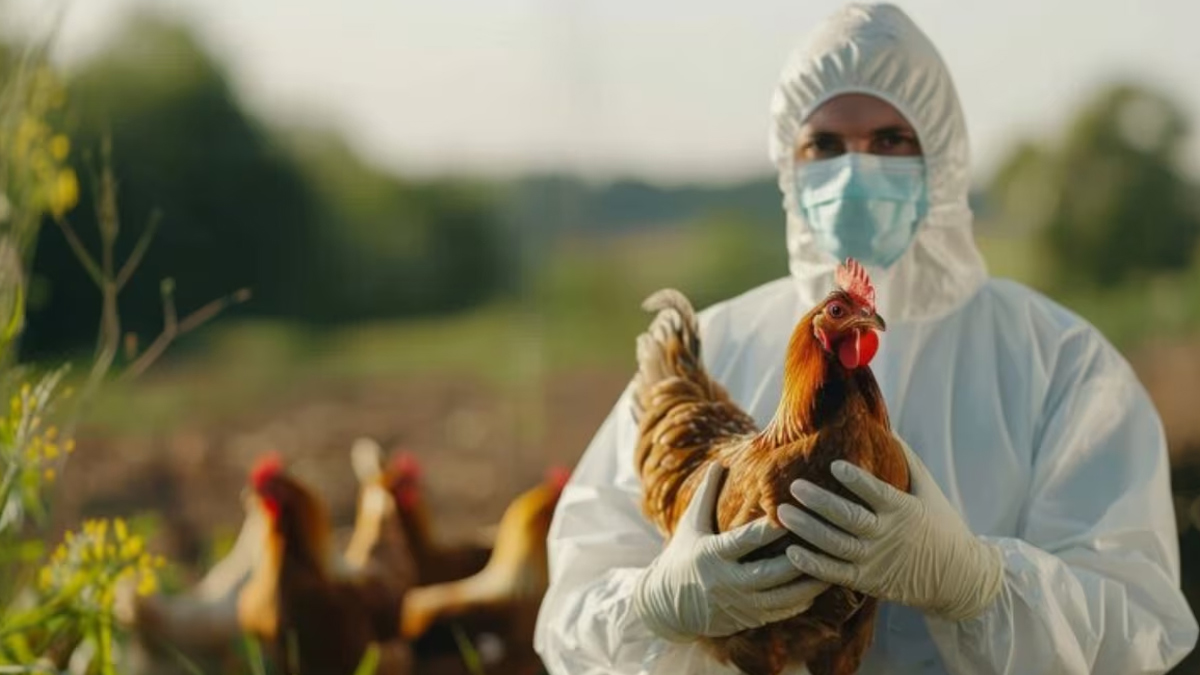
The Centers for Disease Control and Prevention (CDC) has issued a stark warning about the H5N1 avian influenza virus, commonly known as bird flu. Long known to primarily affect poultry, the virus is now spreading among humans and showing troubling signs of mutation. With nine new genetic changes that could enhance its ability to infect humans, concerns of a potential pandemic are mounting.
Table of Content:-
Nine Mutations Raise Red Flags
A recent study published in Emerging Microbes & Infections identified nine mutations in a human-infected strain of the H5N1 virus. This discovery stems from a case reported in Texas, where the virus demonstrated enhanced replication capabilities in human cells and caused severe disease in animal models like mice.

Professor Luis Martinez-Sobrido, Ph.D., from Texas Biomed, whose research focuses on influenza viruses, sounded the alarm during a press conference, “The clock is ticking for the virus to evolve to more easily infect and potentially transmit from human to human, which would be a concern.”
Interestingly, these mutations were absent in earlier strains that predominantly infected birds. This suggests that these changes emerged after the virus adapted to human hosts, raising fears of further evolution toward human-to-human transmission.
H5N1 Cases Surge in the United States
The United States has seen a worrying increase in H5N1 cases since April 2024. As of Thursday, the CDC confirmed 67 cases, highlighting the rapid spread of the virus. Officials are monitoring the situation closely, particularly as some mutations appear to affect how the virus interacts with human immune systems, potentially enabling more severe infections.
The escalating cases have sparked discussions about whether H5N1 could evolve into a pandemic similar to COVID-19. Experts have cautioned that while the likelihood remains uncertain, the growing number of cases and mutations cannot be ignored.

Could H5N1 Trigger a Pandemic?
While the H5N1 virus has not yet achieved sustained human-to-human transmission, the possibility remains concerning. In the last few weeks alone, 62 cases were reported across the U.S., underscoring its potential threat.
Experts emphasize the importance of vigilance, improved surveillance, and preparation to mitigate risks. Officials are urging states to enhance their monitoring processes and fortify response plans to avoid a public health crisis. “The likelihood of an H5N1-triggered pandemic is uncertain, but we cannot afford to ignore the warning signs,” CDC representatives stressed.
Also Read: Economic Burden Of Breast Cancer In India To Cost Around $14 billion By 2030: Study
Preventive Measures for Public Safety
To curb the virus’s spread, health authorities are advising several precautionary measures:
- Biosecurity Protocols: Strengthen hygiene and containment procedures in poultry farms and markets.
- Public Awareness: Educate communities about the risks and symptoms of bird flu.
- Surveillance Systems: Enhance tracking of both human and avian cases to detect outbreaks early.
Individuals in affected regions are advised to avoid direct contact with poultry and report any unusual symptoms to healthcare providers promptly.
Bottomline
The rise in H5N1 cases, coupled with its mutations, is a sobering reminder of the ever-present threat of zoonotic diseases. While the virus has not yet reached pandemic status, the CDC’s warnings serve as a critical call to action for governments, healthcare systems, and the public.
Preparedness, vigilance, and proactive measures will be key to containing the virus and preventing it from becoming the next global health crisis.
Also watch this video
How we keep this article up to date:
We work with experts and keep a close eye on the latest in health and wellness. Whenever there is a new research or helpful information, we update our articles with accurate and useful advice.
Current Version
